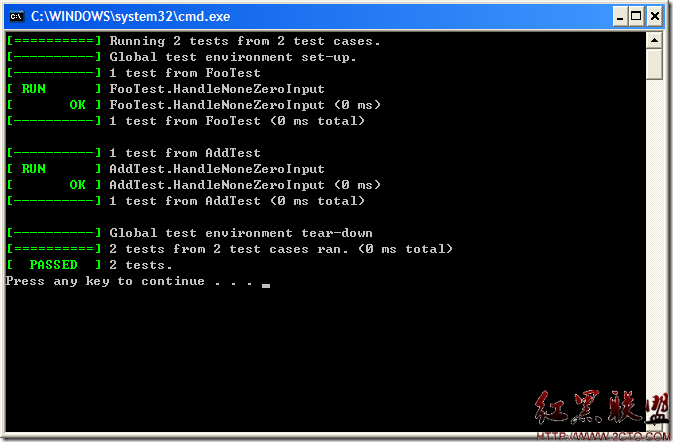判断给定的图是否是有向无环图
判断给定的图是否是有向无环图,方法是应用拓扑排序,代码如下:
[cpp]
#include<iostream>
#include<list>
#include<stack>
using namespace std;
class Graph {
int vertexNum;
list<int> *adjacents;
public:
Graph(int _vertexNum) {
vertexNum = _vertexNum;
adjacents = new list<int>[vertexNum];
}
void findIndegree(int *indegree, int n);
bool topologicalSort();
void addEdge(int v, int w);
};
void Graph::addEdge(int v, int w) {
adjacents[v].push_back(w);
}
void Graph::findIndegree(int *indegree, int n) {
int v;
list<int>::iterator iter;
for(v = 0; v < vertexNum; v++) {
for (iter = adjacents[v].begin(); iter != adjacents[v].end(); iter++)
indegree[*iter]++;
}
}
bool Graph::topologicalSort() {
int ver_count = 0;
stack<int> m_stack;
int *indegree = new int[vertexNum];
memset(indegree, 0, sizeof(int) * vertexNum);
findIndegree(indegree, vertexNum);
int v;
for (v = 0; v < vertexNum; v++)
if (0 == indegree[v])
m_stack.push(v);
while (!m_stack.empty()) {
v = m_stack.top();
m_stack.pop();
cout << v << " ";
ver_count++;
for (list<int>::iterator iter = adjacents[v].begin(); iter != adjacents[v].end(); iter++) {
if (0 == --indegree[*iter])
m_stack.push(*iter);
}
}
cout << endl;
if (ver_count < vertexNum)
return false;
return true;
}
int main(int argc, char *argv[]) {
Graph g(6);
g.addEdge(5, 2);
g.addEdge(5, 0);
g.addEdge(4, 0);
g.addEdge(4, 1);
g.addEdge(2, 3);
g.addEdge(3, 1);
if (g.topologicalSort())
cout << "it is a topological graph" << endl;
else
cout << "it is not a topological graph" << endl;
cin.get();
return 0;
}
#include<iostream>
#include<list>
#include<stack>
using namespace std;
class Graph {
int vertexNum;
list<int> *adjacents;
public:
Graph(int _vertexNum) {
vertexNum = _vertexNum;
adjacents = new list<int>[vertexNum];
}
void findIndegree(int *indegree, int n);
bool topologicalSort();
void addEdge(int v, int w);
};
void Graph::addEdge(int v, int w) {
adjacents[v].push_back(w);
}
void Graph::findIndegree(int *indegree, int n) {
int v;
list<int>::iterator iter;
for(v = 0; v < vertexNum; v++) {
for (iter = adjacents[v].begin(); iter != adjacents[v].end(); iter++)
indegree[*iter]++;
}
}
bool Graph::topologicalSort() {
int ver_count = 0;
stack<int> m_stack;
int *indegree = new int[vertexNum];
memset(indegree, 0, sizeof(int) * vertexNum);
findIndegree(indegree, vertexNum);
int v;
for (v = 0; v < vertexNum; v++)
if (0 == indegree[v])
m_stack.push(v);
while (!m_stack.empty()) {
v = m_stack.top();
m_stack.pop();
cout << v << " ";
ver_count++;
for (list<int>::iterator iter = adjacents[v].begin(); iter != adjacents[v].end(); iter++) {
if (0 == --indegree[*iter])
m_stack.push(*iter);
}
}
cout << endl;
if (ver_count < vertexNum)
return false;
return true;
}
int main(int argc, char *argv[]) {
Graph g(6);
g.addEdge(5, 2);
g.addEdge(5, 0);
g.addEdge(4, 0);
g.addEdge(4, 1);
g.addEdge(2, 3);
g.addEdge(3, 1);
if (g.topologicalSort())
cout << "it is a topological graph" << endl;
else
cout << "it is not a topological graph" << endl;
cin.get();
return 0;
}
补充:软件开发 , C++ ,




